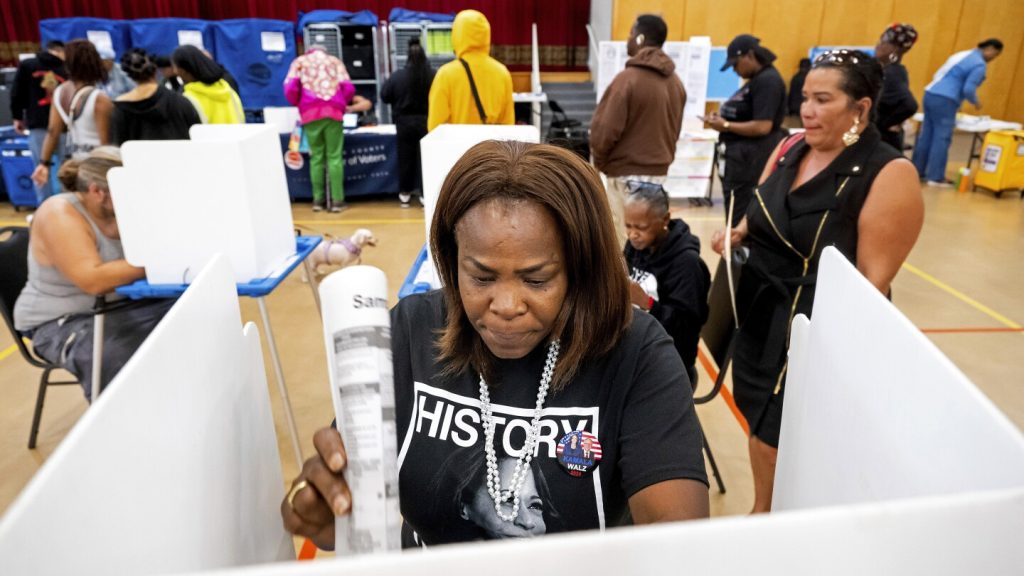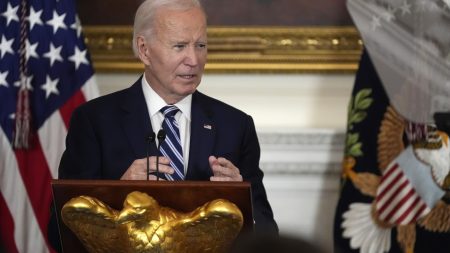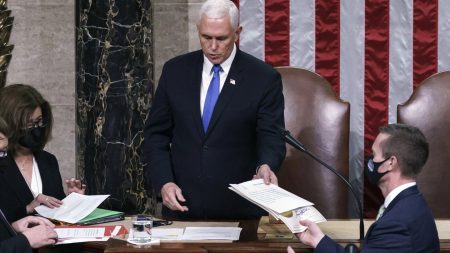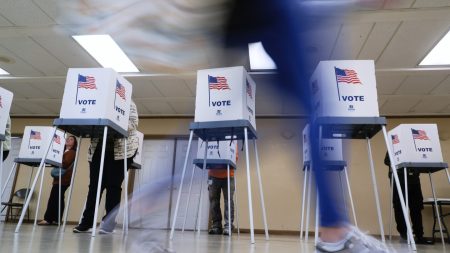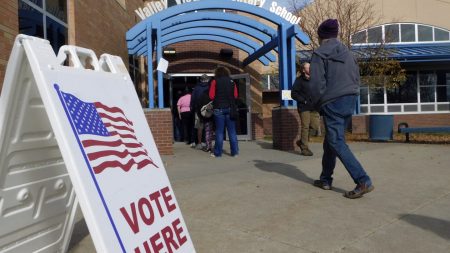In the 2024 presidential election, Donald Trump focused his campaign on hypermasculinity, targeting young men with interviews on male-centric podcasts. Leading up to the election, Trump and his supporters made sexist remarks and jokes about Vice President Kamala Harris, with some warning that he risked widening his gender gap with her. However, the gender voting gap in the election was not unusual, as men were more likely to support Trump while women favored Harris. This trend has been consistent in presidential elections since 1996, with the majority of women preferring the Democratic candidate.
Despite Trump’s efforts to appeal to young men, Harris still had an advantage among women in the 2024 election, winning 53% of female voters compared to Trump’s 46%. Trump did make inroads with men, with 54% of them backing him in 2024, a slight increase from 2020. The shifts in gender voting preferences were more pronounced among younger voters, as well as Black and Latino voters. Trump also saw increased support from young Black men, doubling his share compared to 2020, and a decrease in Latino men voting for the Democratic nominee.
While concerns about sexism and the possibility of electing the first female president were important to many women in the election, economic issues such as immigration and inflation were more prevalent concerns that crossed gender lines. Kelly Dittmar from the Center for American Women and Politics noted that Trump tapped into fears about disrupted gender norms and power dynamics, which may have influenced some voters. Despite concerns about misogyny and racism, a majority of voters were willing to overlook these factors in their voting decisions, with only a small percentage of women citing electing a woman president as a top factor in their vote.
Black women were the most motivated by the possibility of electing the first female president, with about a third stating it was the main factor in their vote choice. Overall, about 9 in 10 Black women and 6 in 10 Latina women backed Harris, while just under half of white women supported the vice president. The results of the election suggest that gender dynamics played a role in voter preferences, but economic concerns and other issues also influenced voting decisions. The gender voting gap in 2024 was not significantly different from previous elections, highlighting the ongoing divide between male and female voters.
In conclusion, the 2024 presidential election saw Donald Trump and Kamala Harris competing for support among men and women, with Trump appealing to young men and Harris maintaining an advantage among women. Despite concerns about sexism and the potential for electing the first female president, economic issues and other factors played a significant role in voter decisions. The results of the election reflect a continued gender gap in voting preferences, with women consistently preferring Democratic candidates while men tend to support Republican candidates. The impact of gender dynamics on voter behavior underscores the complex interplay of factors that influence electoral outcomes.









